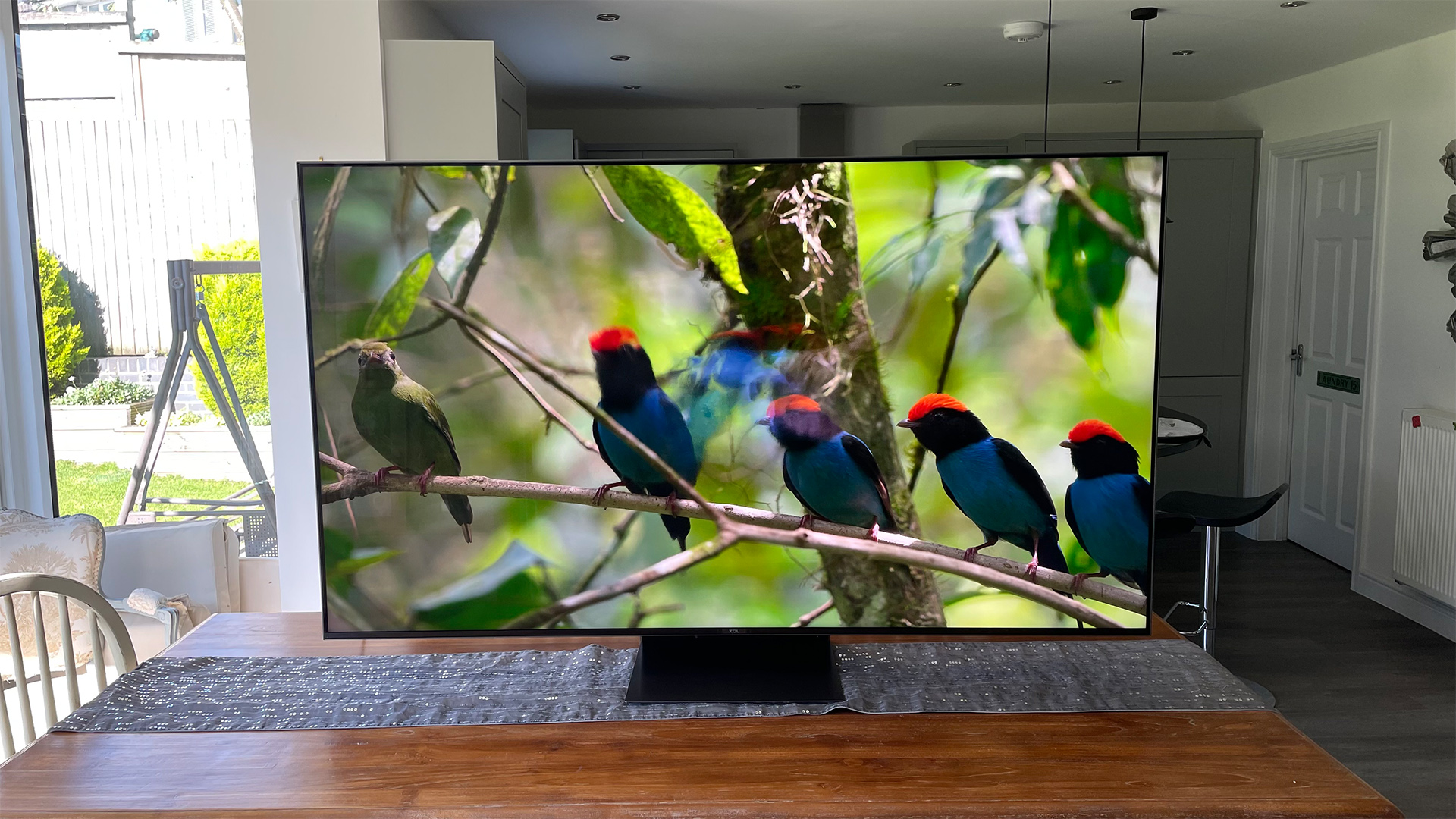What Hi-Fi? Verdict
With its extreme brightness and huge dimming zone count, the C845K has no right costing as little as it does
Pros
- +
Stunningly bright, contrast-rich and colourful
- +
Comprehensive gaming features
- +
Incredible value
Cons
- -
Picture needs careful set up
- -
Minor clouding with some HDR images
- -
Occasional subwoofer buzzing
Why you can trust What Hi-Fi?
TCL has been pretty forthright in recent times about its belief that LED – especially Mini LED – is the future of TV, rather than OLED. Which is fine, of course, so long as TCL then delivers TVs that actually back that belief up.
TCL’s latest attempt to put its money where its LED mouth is is the Mini LED-toting C845K. In fact, as the brand’s flagship 65-inch TV for the UK and Europe in 2023, it should provide the best evidence yet of whether TCL is really onto something with its anti-OLED banter. No pressure then…
Price
This is probably the single biggest attraction of the 65C845K, and will certainly play the biggest single part in it selling in what we suspect will be prodigious numbers. At £1049 in the UK, 1300 Euros in the EU and $2199 in Australia it would look pretty good value for even a fairly basically specified 65-inch TV. As will become apparent, though, the 65C845K is anything but a basically specified 65-inch TV. In fact, thanks in particular to its ground-breaking brightness and potent local dimming light control, it boasts a level of picture and sound performance that would normally cost you hundreds, even thousands of pounds more.
You may also have seen the TCL 65C841K online. This is a version of the 65C845K that's exclusive to Amazon but is otherwise, TCL assures us, identical to the TV reviewed here.
The 65C845K is not available in the US, and there doesn’t appear to be anything particularly similar to it in TCL’s US range, either. For reference, the TV's UK price of £1049 currently converts to around $1320.
Design & build
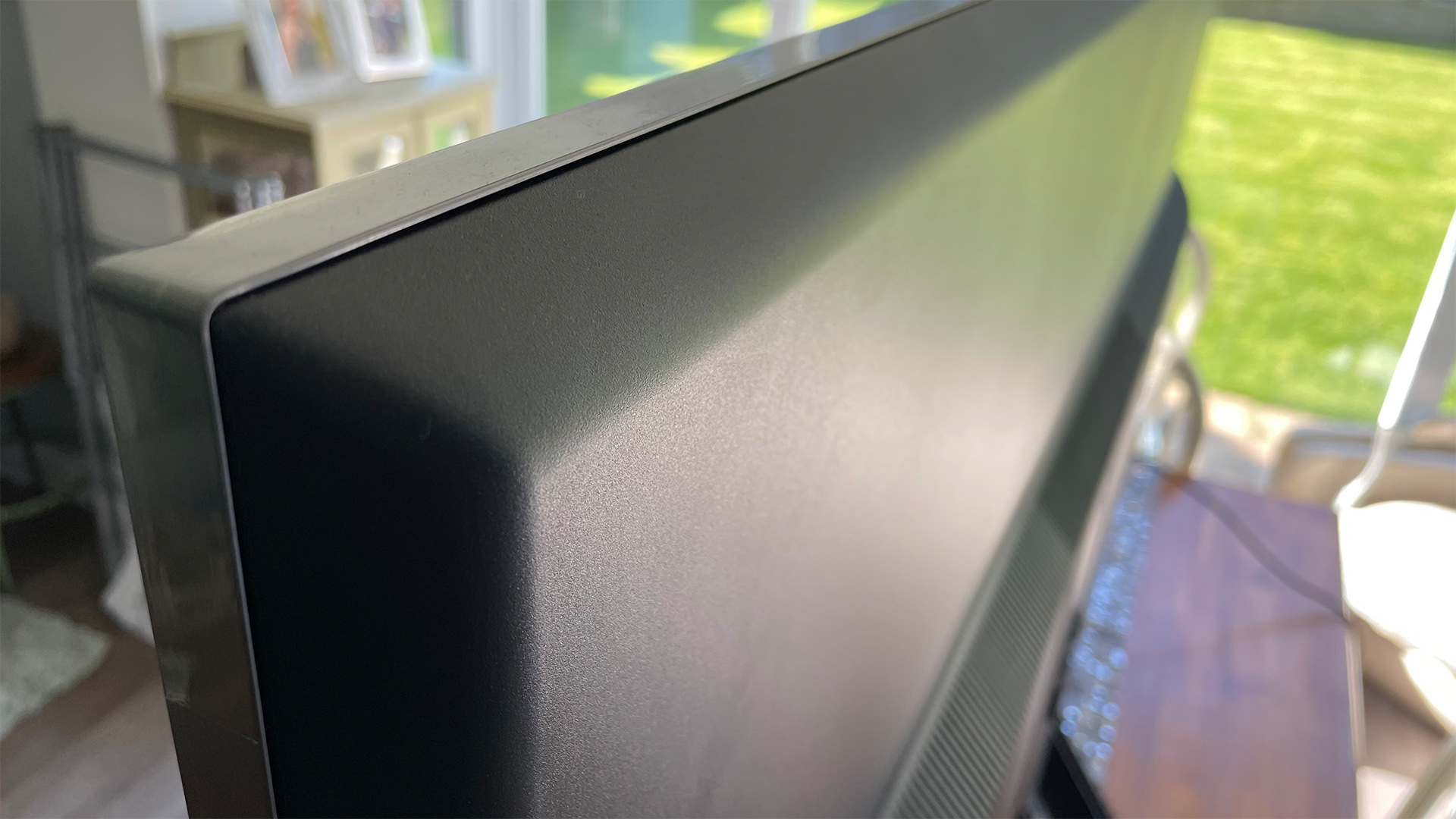
The TCL C845K is a substantial hunk of TV. Even at its thinnest section, it sticks out more than most of today’s super-slim models, yet its bottom half sticks out substantially further again, at which point the set really does become properly chubby. And as such, perhaps not the best option for people looking to wall mount their new TV.
We will be heavily inclined to forgive the C845K’s bigger-than-usual rear, though, if it turns out that it’s a function of TCL taking an uncompromising approach to both its LED backlighting system and its speaker design.
Build quality feels a little plasticky for a flagship TV, but if that’s one of the prices we have to pay for getting the level of picture and sound specification the C845K offers for so little money, we’re not going to complain too much. Also, the desktop stand, at least, features plenty of heavy-duty metal, while its central placement makes it easy to place the TV on even quite narrow bits of furniture.
The plate on the rear of the stand’s neck is detachable, too, so that you can hide all your cables neatly beneath it.
Features
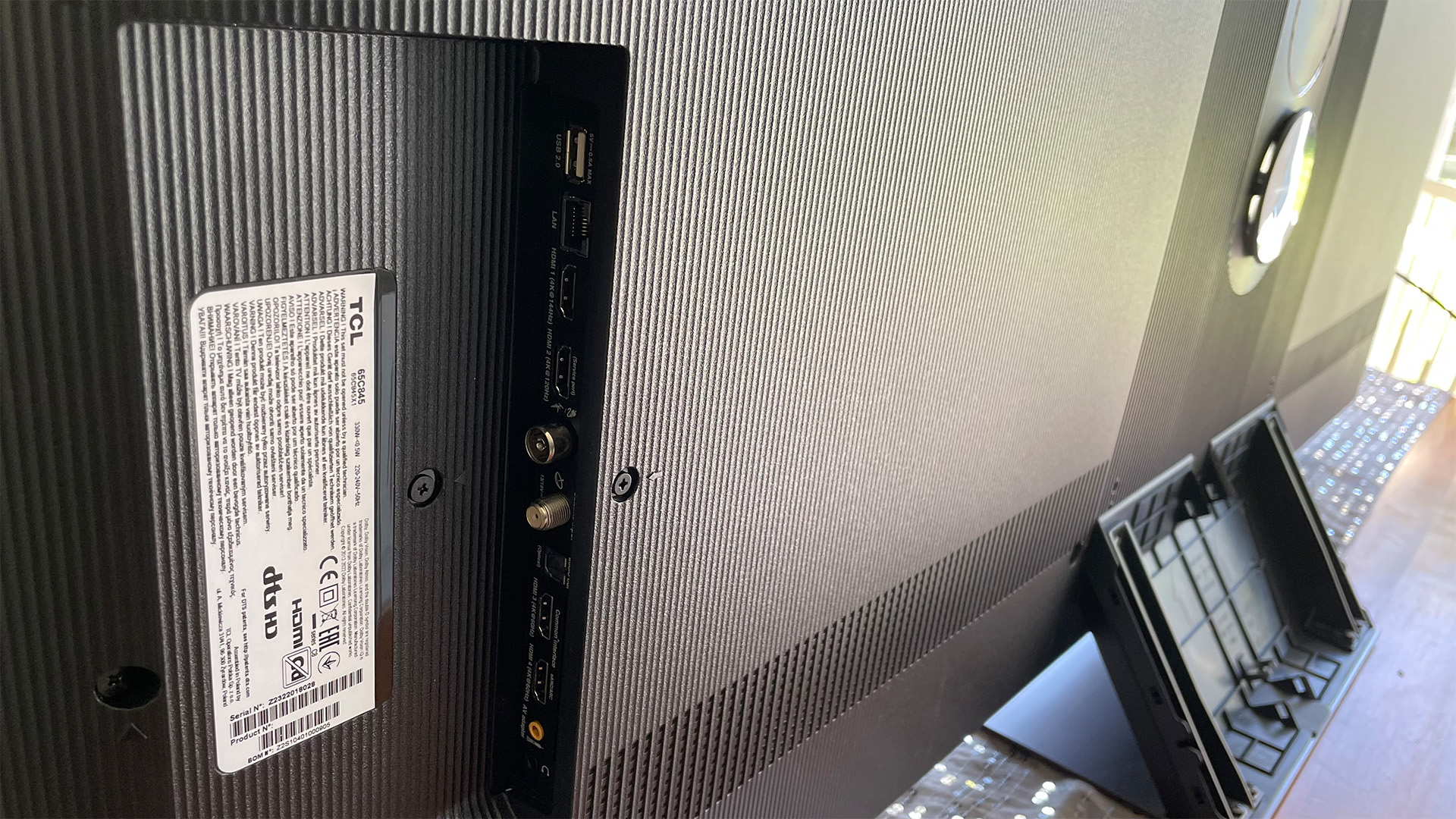
As we said, the 65C845K enjoys a much more premium specification than you would expect for its money. In particular, its 65-inch, VA-type screen uses Mini LED technology, where much smaller LEDs than normal are used in greater numbers to deliver more brightness and light control.
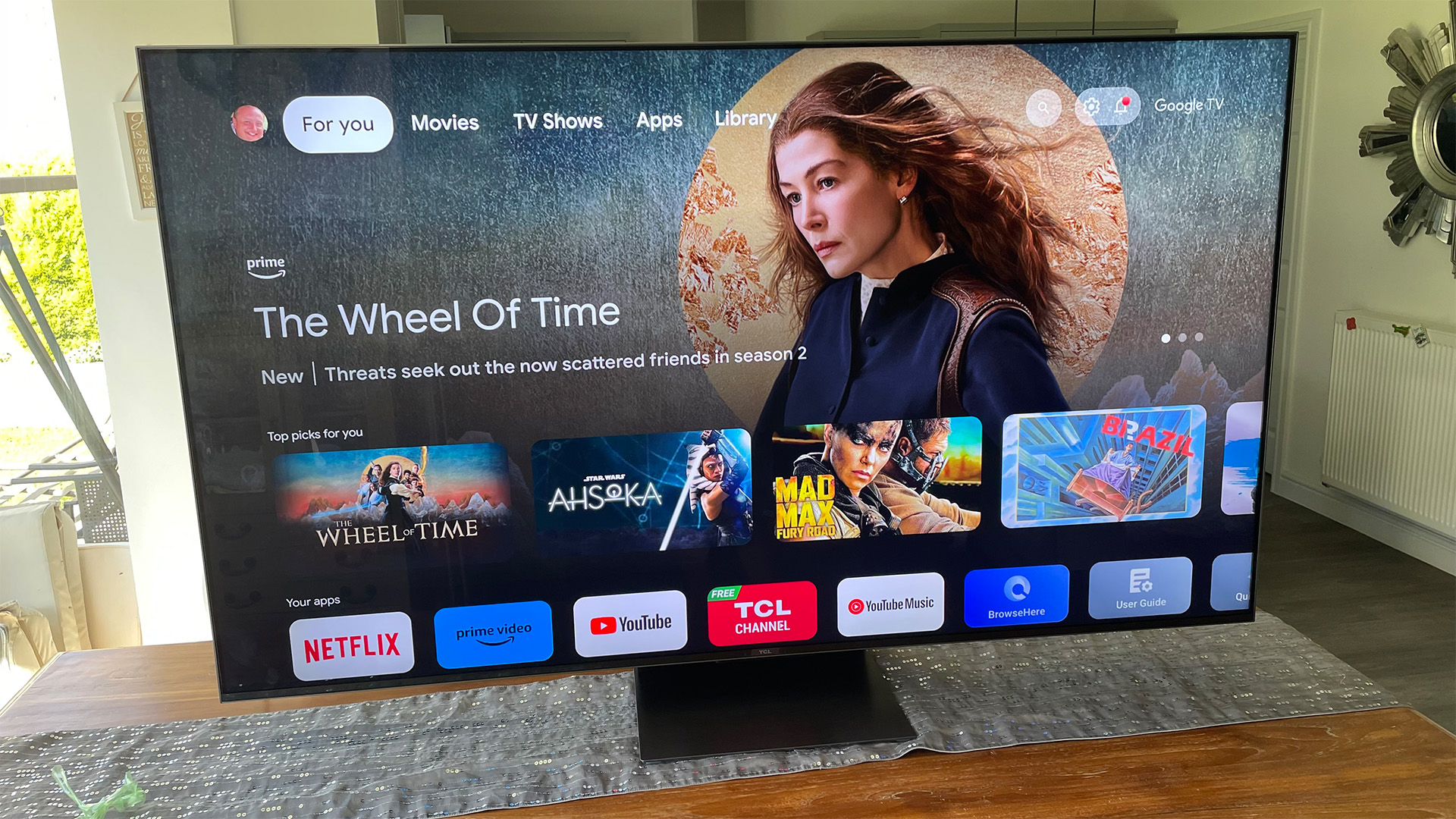
Screen size 65 inches (also available in 55in, 75in and 85in)
Type QLED
Backlight Mini LED
Resolution 4K
HDR formats HLG, HDR10, HDR10+, Dolby Vision
Operating system Google TV
HDMI inputs x4 (2 x 48Gbps HDMI 2.1)
Gaming features 4K/120Hz, VRR, ALLM, Dolby Vision game mode
ARC/eARC eARC
Optical output? Yes
Dimensions (hwd, without stand) 83 x 145 x 8.5cm
This is backed up by local dimming, where multiple ‘zones’ of the Mini LEDs can be controlled independently of each other depending on the local needs of the picture. In the case of the 65-inch C845K (smaller and larger versions will likely be different), we count 576 distinct light control zones – an extremely high number for a 65-inch budget TV that costs just £1049 / AU$2199 (around $1320). Typically, similarly affordable TVs with local dimming systems will carry fewer than 100 separate zones.
We should follow this up right away by saying that LCD TV picture quality is not always just down to how many dimming zones you have; it’s what you do with them that counts. Sony, in particular, has done some pretty amazing things with relatively limited dimming zone numbers (see the Sony X90L review for evidence). Nonetheless, it follows that if you can back them up with good control algorithms, having more dimming zones counts as a pretty handy starting point.
While Sony is famously coy about quoting specification ‘numbers’ for its TVs, TCL has no such inhibitions, proudly declaring that it believes the 65C845K to be capable of delivering 2000 nits of brightness. This is a remarkable claim in a TV world where we would expect similarly priced TVs to struggle to hit even a quarter of that brightness. Most TVs costing even thousands of pounds more won’t give you quite as much HDR-friendly brightness as TCL is claiming here.
Again, brightness alone doesn’t guarantee picture quality. In conjunction, though, with the C845K’s high dimming zone count and the fact that it uses Quantum Dots to deliver high-volume colours capable of capitalising on all that claimed brightness (TCL claims coverage of 97 per cent of the digital cinema DCI-P3 spectrum), we can’t help but at least hope that the 65C845K is going to do something pretty groundbreaking for its price point.
Gamers thinking the C845K’s startling spec-to-price ratio might make it an exciting potential gaming monitor will be pleased to hear that it uses a 120Hz panel, while two of its four HDMI ports are capable of receiving 4K/120Hz feeds from the PlayStation 5, Xbox Series X and sufficiently high-spec PCs. In fact, the screen is even capable of handling 144Hz PC titles.
The C845K’s so-called Game Master Pro 2.0 system provides VRR support too, in the AMD FreeSync and ‘basic’ HDMI flavours, as well as ALLM switching so the TV will always turn to its fast-response Game mode when a game source is detected.
A dedicated gaming onscreen menu, meanwhile, provides a helpful combination of signal information and game-specific features that include an Aiming Aid, multiple game picture presets, and the facility to adjust the brightness of dark parts of the picture without overcooking the brightness elsewhere.
Impressively, the C845K adds support for the so-called ‘active’ (since they add extra scene-by-scene picture information) Dolby Vision and HDR10+ high dynamic range formats alongside the basic HDR10 and HLG formats. This, too, has a gaming advantage, as the Dolby Vision support extends to not just a Dolby Vision game mode, but support for Dolby Vision at 4K/120Hz frame rates – something hardly any TVs beyond LG’s 2022 (such as the C2) and 2023 (including the C3) OLEDs have previously been able to handle.
The Dolby Vision and HDR10+ support extends, too, to the formats’ IQ and Adaptive versions respectively, where they can intelligently adjust their picture outputs to suit the ambient light conditions in your room. And as if that wasn’t enough support for ‘third party’ picture formats, the C845K also arrives with IMAX Enhanced certification, meaning it has been deemed capable of unlocking the potential of sources mastered using IMAX’s proprietary methodology.
The C845K’s impressive panel specifications are controlled by the third generation of TCL’s AI-informed AiPQ 3.0 processor, which includes an upscaling engine built on deep learning techniques.
The C845K’s smarts are provided courtesy of Google TV. This is fine on one level; Google TV has bags of content, of course, and its interface is more attractive and friendly than that of the older Android TV. It does lack a few UK-specific catch-up TV services, though – which is why, uniquely, TCL is prepared to provide anyone in the UK who asks for one with a free Roku smart stick that can deliver the services the TV can’t provide itself.
With so much attention to picture quality for so little money, the C845K could have been forgiven if it had gone pretty basic with its audio system. In fact, though, it has worked with sound specialist Onkyo to create a 40W, 2.1-channel system complete with a large ‘floating’ subwoofer on the rear and decoding of both Dolby Atmos and DTS Virtual:X soundtracks.
Picture
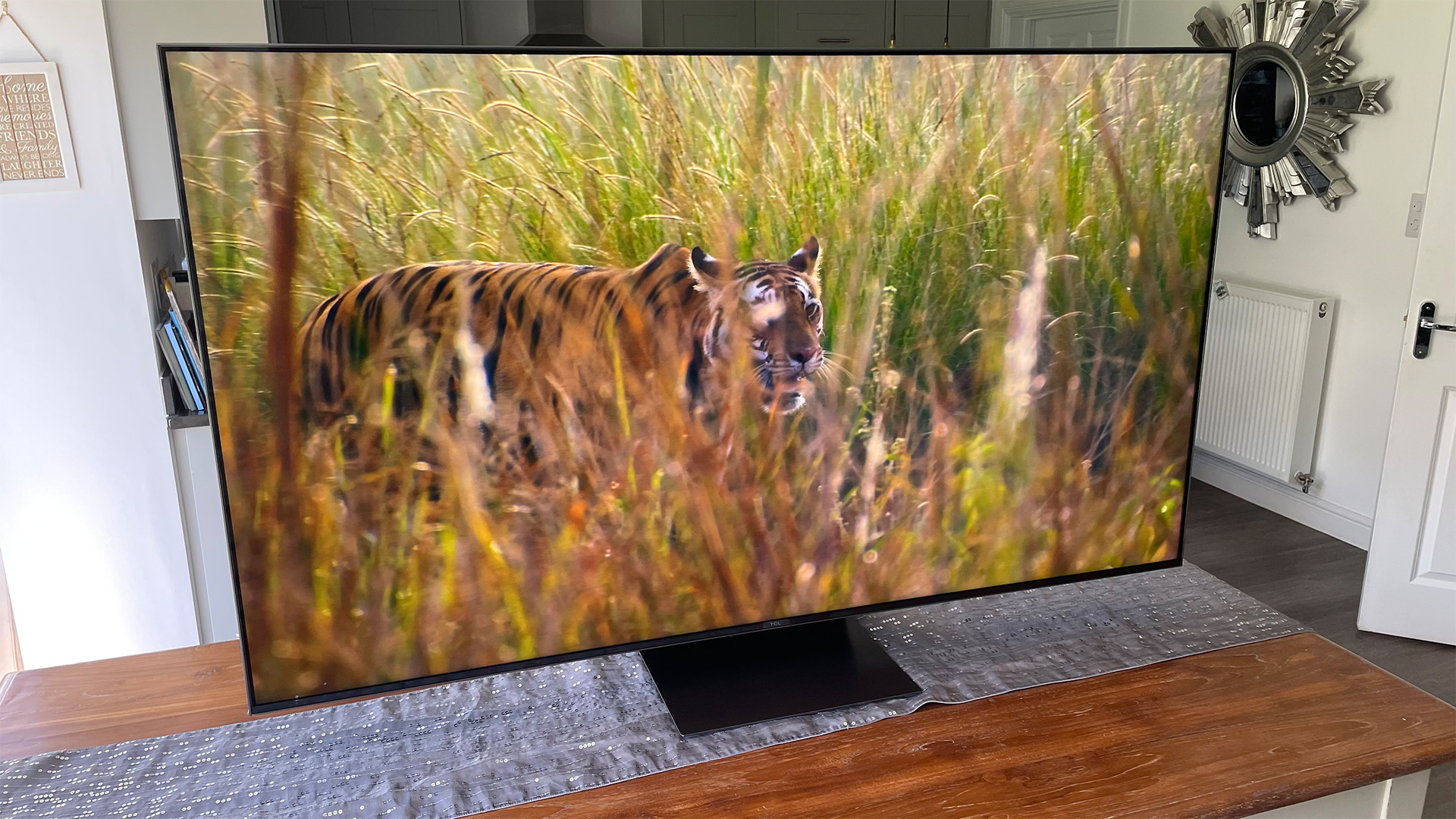
It takes about a nanosecond watching the 65C845K – especially with HDR sources – to see that TCL’s boasts about its TV being incredibly bright for its money were much more than idle marketing speak. Its pictures really do jump off the screen with an intensity far beyond anything else we have seen at anything like the same price. In fact, they leave the vast majority of much more expensive mid-range and even a few really premium TVs looking dull by comparison. Including, as TCL would want it to, OLED models, with even the latest MLA and QD-OLED sets falling some way short of the sort of brightness the C845K can achieve, particularly when it comes to full-screen bright imagery.
That’s not meant to imply, though, that the C845K’s epic brightness dissipates where a small bright object has to appear against a dark backdrop. The local dimming zones are numerous and cleverly enough used to enable TCL to maintain much – if not quite all – of the local intensity it would have had on the ultra high-end professional monitor it was mastered on.
There is much less aggressive dimming of such stand-out brightness peaks, certainly, than there is with Samsung’s Mini LED TVs, which place a higher premium on keeping their screens’ outstanding black levels uniform and consistent.
This fact does bring us quite early on to the C845K’s biggest picture weakness, though. Namely, a slightly cloudy look that can sometimes appear with shots and scenes that contain a bold mixture of very bright and very dark content, as the local light controls wrestle with achieving the best balance of local contrast and HDR brightness.
To be clear, the blooming/clouding around stand-out bright objects really is only noticeable in very high-contrast images, and even when it shows up it is thankfully both quite subdued in its brightness and quite vague when it comes to the point at which it melds back into the surrounding blackness. Two factors that greatly reduce its potential for distraction.
Perhaps as a result of TCL’s efforts to keep the clouding so faint and vague, though, it can sometimes spread further away from the edges of a particularly bright object than we might have anticipated from a TV that has 576 dimming zones at its disposal. Having said that, the resulting sometimes slightly misty-looking pictures are far less likely to distract you than smaller but brighter and more defined areas of blooming would.
Getting back to the good stuff, despite the occasional misty moment, the C845K’s black-level performance is actually excellent for such an affordable TV. The screen can become essentially perfectly dark when there’s a fade to black, while dark scenes are typically only minimally affected by underlying low-contrast greyness.
The C845K can achieve this, too, without crushing out shadow details from dark areas – so long, that is, as you are not watching an HDR film using the TV’s default Standard picture preset. The only way you can stop moments of black crush happening in the Standard mode is to turn the Local Dimming setting down to Low, but that hits black levels pretty hard.
The C845K delivers outstanding sharpness and clarity with native 4K sources, and while its motion handling with 24p sources isn’t quite as refined and natural with or without processing active as the best rivals, it is fairly free from unwanted side effects and still looks natural enough to leave you immersed in what you are watching.
Upscaling of HD sources is a touch disappointing given the promises of ‘Deep Learning’ intervention, leaving things looking a little soft and undetailed versus the sort of results we are now accustomed to getting from the likes of Samsung, LG and Sony. The C845K’s upscaling at least doesn’t look noisy or ‘rough’, though, so we would say it remains good enough for such an affordable TV capable of such heroics with native 4K.
As hoped, the C845K’s colour performance is mostly a riotous success. Combining Quantum Dots with so much brightness and such surprisingly effective light controls allows TCL’s flagship to deliver spectacularly vibrant and rich-looking pictures that vividly unlock the wide colour capabilities usually baked into HDR content. Just as importantly, though, TCL’s processing is refined enough to deliver tones across such a broad palette with impressive subtlety. So, provided you avoid the at times pretty crazy excesses delivered by the C845K’s Dynamic picture preset, for the most part, the vividness doesn’t become cartoonish and unrealistic.
The various picture strengths we have talked about so far help to make the C845K an engagingly spectacular gaming TV too. Especially as the game mode delivers a decently low input lag measurement of 15.3ms with 60Hz content. This figure more than halves in 120Hz mode.
There are a couple of other minor gremlins to report before we wrap this section up. First, just occasionally the C845K’s lust for brightness can push so hard that certain colours struggle to keep up, leaving them looking a touch washed out. Second, and similarly rarely, subtle changes in the lighting of a very dark scene can cause momentary fluctuations in one or two local dimming zones. Considering how many zones are in play, though, and how extreme the darkest and brightest ends of the C845K’s presentation are, we would say these moments of instability are actually impressively rare.
Sound
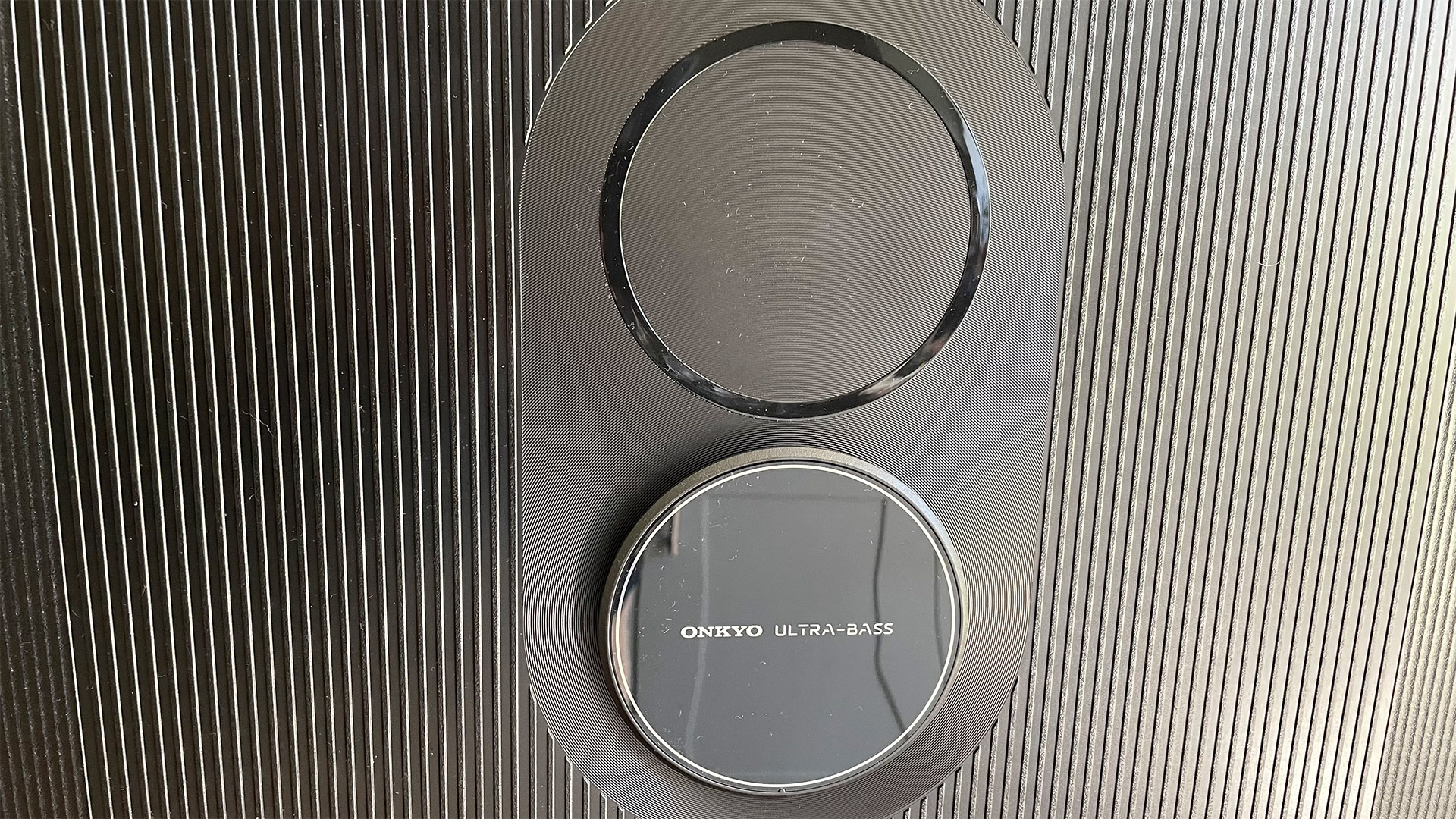
While not quite as exceptional as its pictures, the C845K’s sound is still much better than we would expect with such an affordable TV. It has got bags of volume, for starters, getting way louder than most TVs in its class while also managing to use that volume to create a sound stage much larger than the physical proportions of the TV.
Vocals are locked nicely to the screen and remain clear and credible even when there’s a lot going on behind them, and both ambient and specific location effects are reproduced with reasonable sensitivity and clarity.
The subwoofer, meanwhile, eagerly underpins everything with far deeper bass than you get with most TVs, while only occasionally breaking down into mild distortions with the most extreme movie bass lines.
Aside from the rare moments of bass wobble, the only other issue with the C845K’s overall excellent sound is that busy movie tracks can lose a little cohesion as the TV tries to expand the soundstage.
Do bear in mind that we're saying the C845K sounds excellent by the standards of TVs at its price, and that it would (and should) still be easily improved through the addition of a soundbar.
Verdict
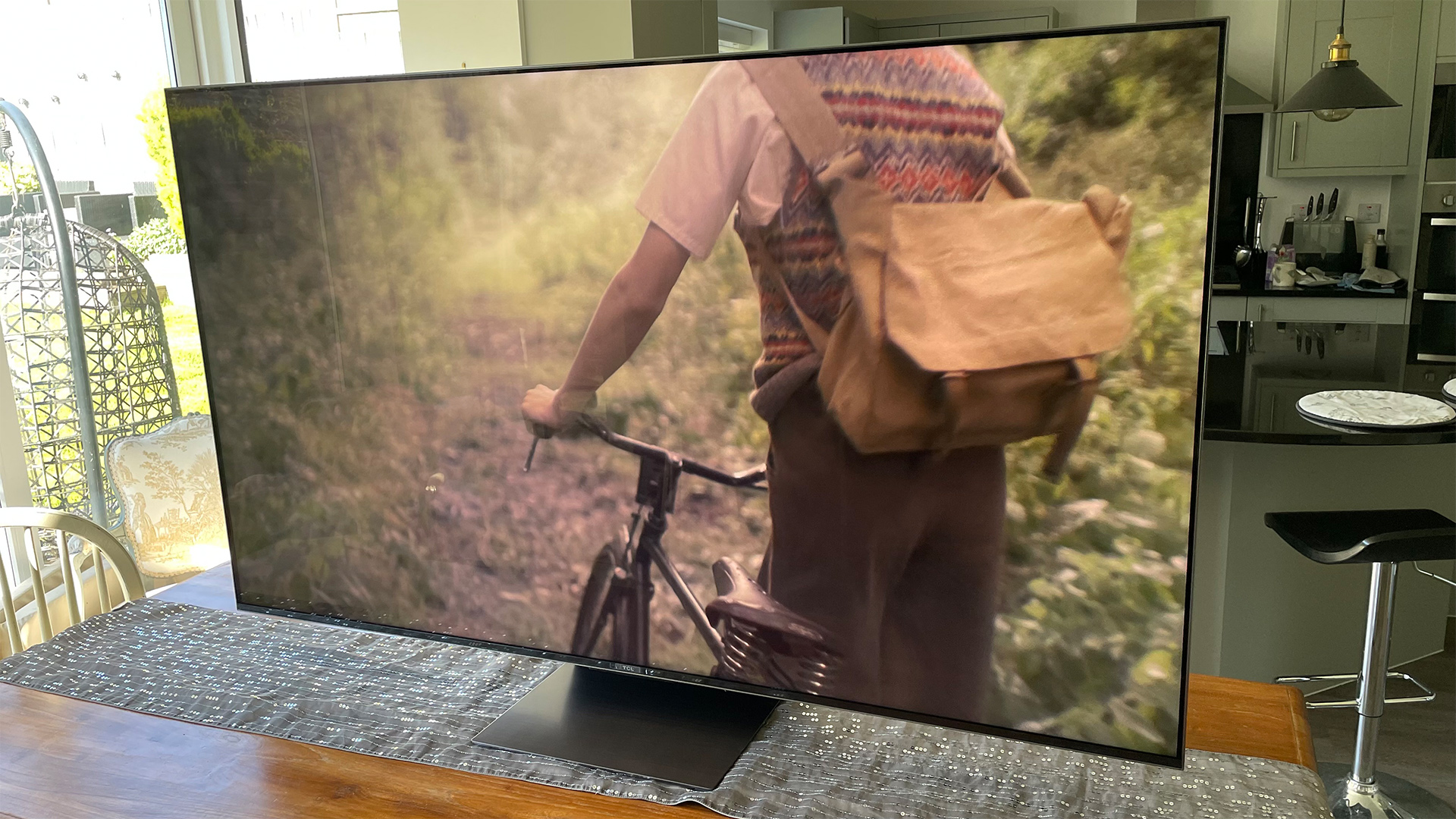
The 65C845K sees TCL finally bringing to Europe the combination of aggressive pricing and unexpectedly excellent performance that has made the brand so successful in the US. In fact, the 65C845K is so good for its money that it pretty much redefines the whole TV market in a single blaze of ultra-bright glory.
SCORES
- Picture 5
- Sound 5
- Features 5
ALSO CONSIDER:
Hisense U8K
Sony X90L
Amazon Fire TV Omni QLED
MORE:
These are the best TVs you can buy right now
And here are the latest and greatest TV deals
John Archer has written about TVs, projectors and other AV gear for, terrifyingly, nearly 30 years. Having started out with a brief but fun stint at Amiga Action magazine and then another brief, rather less fun stint working for Hansard in the Houses Of Parliament, he finally got into writing about AV kit properly at What Video and Home Cinema Choice magazines, eventually becoming Deputy Editor at the latter, before going freelance. As a freelancer John has covered AV technology for just about every tech magazine and website going, including Forbes, T3, TechRadar and Trusted Reviews. When not testing AV gear, John can usually be found gaming far more than is healthy for a middle-aged man, or at the gym trying and failing to make up for the amount of time he spends staring at screens.
-
simontompkins Thank you John Archer and Tom Parsons for your most excellent review.Reply
Many of the TV reviews I've read on your rather wonderful site include a note about how the TV under review compares to other TVs; here no mention in the verdict of the LG C3 or LG G3.
However, the TCL is noted as costing 1049 while under "Also Consider" is the the Sony X90L at 1599 and the Hisense U8K at 1699. and the Amazon Fire TV Omni QLED at 1000
You note that the TCL:
"boasts a level of picture and sound performance that would normally cost you hundreds, even thousands of pounds more."
and
"so good for its money that it pretty much redefines the whole TV market in a single blaze of ultra-bright glory."
Interesting that the "Also Consider" has the Sony and Hisense, that are significantly more while the Amazon is approximately the same price. Is the Amazon at an equally disruptive price?Particularly, please could you clarify "for its money", is that "good at this price" or "it really is better than TVs like the Sony and Hisense; or the C3 or G3 for that matter?
Perhaps we should conclude that while the TCL is a stellar TV, the rating is based on price and while the Sony and Hisense cost more, they are in fact better TVs.
While your review is clearly about a game changing TV at an extremely disruptive price,
I would be very interested to read a further clarification from you.
